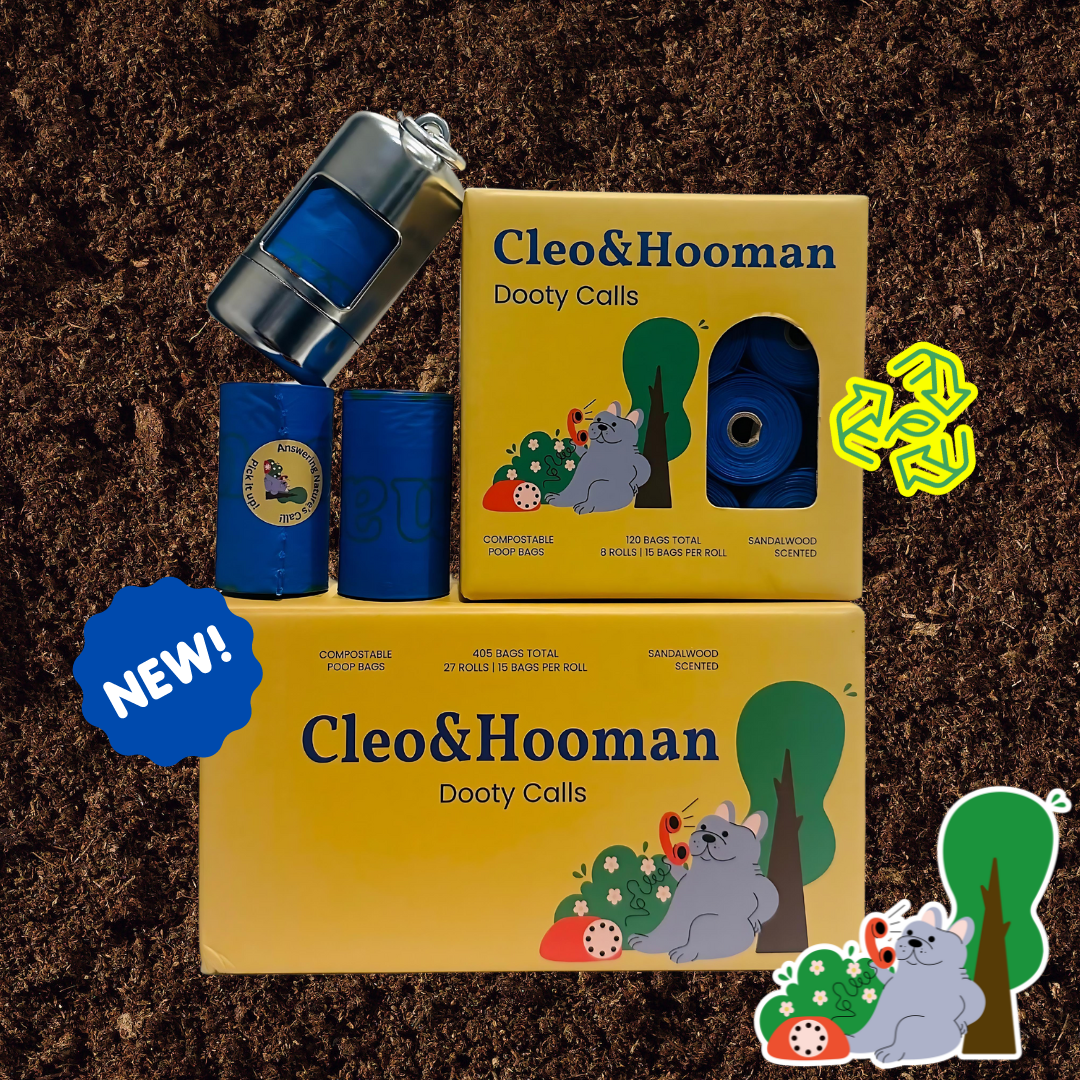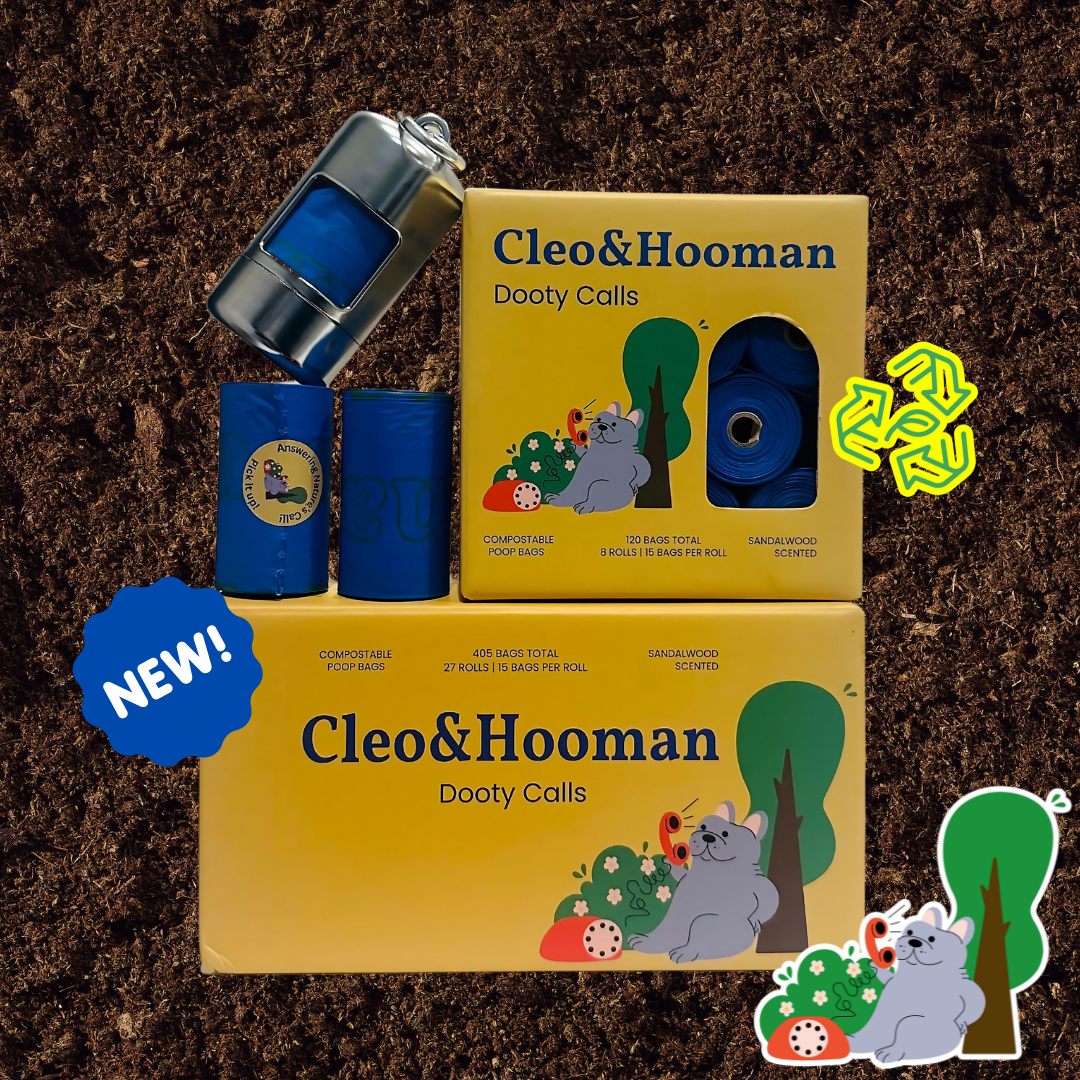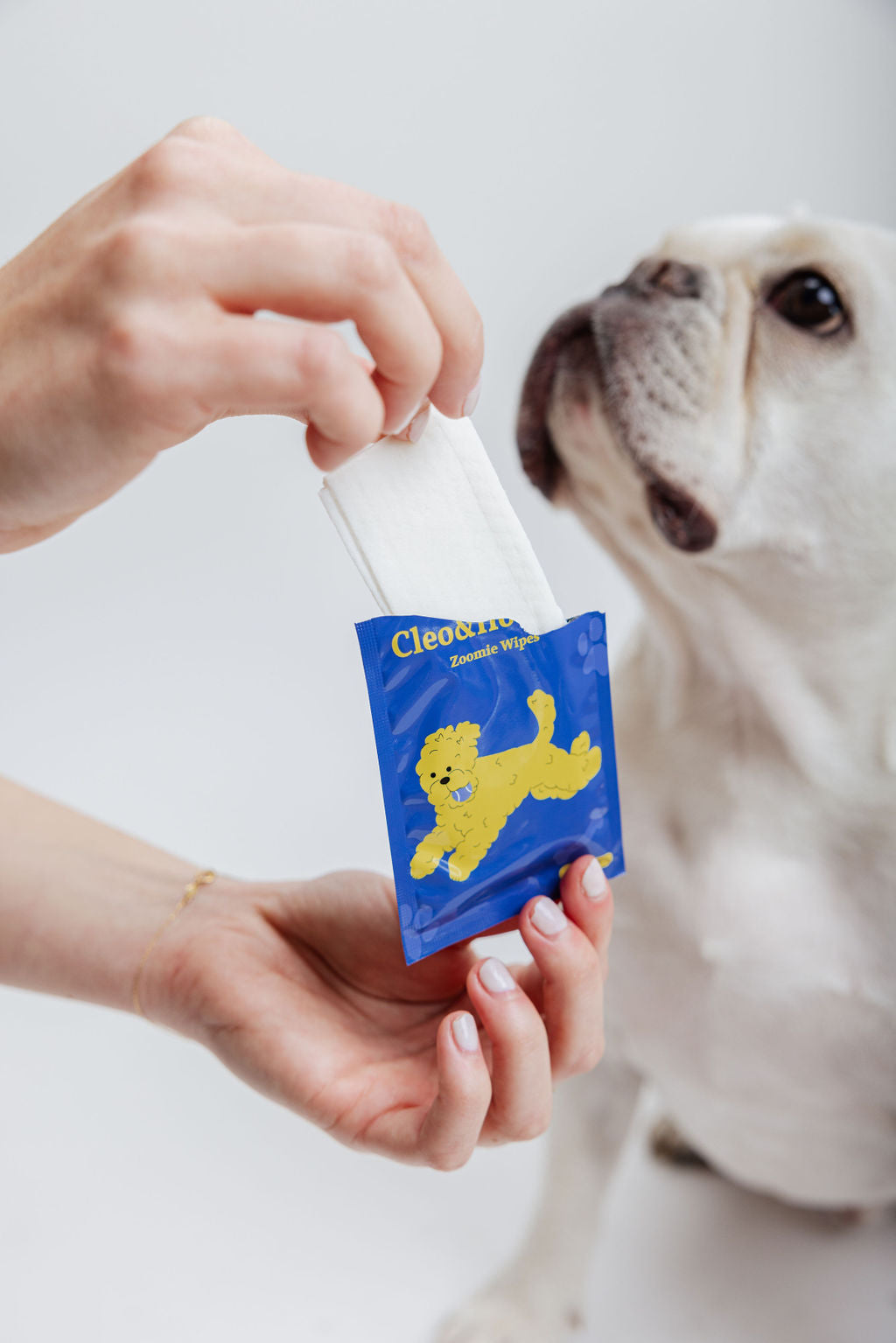DIGITAL DOG PARK
Why Compostable Poop Bags Are the Future of Eco-Friendly Pet Care
As awareness of environmental sustainability grows, the pet care industry is also evolving to meet eco-conscious demands. Compostable poop bags are emerging as a vital innovation in this space, providing a sustainable alternative to traditional plastic waste bags. This article delves into why compostable poop bags are set to become the standard in eco-friendly pet care. Main Content: The Problem with Plastic Poop BagsTraditional plastic poop bags contribute significantly to environmental pollution. They can take hundreds of years to decompose and often break down into microplastics, which contaminate soil and water and pose serious risks to wildlife. In contrast, compostable bags made from materials like corn starch break down quickly and safely, without leaving toxic residues. Benefits of Compostable Poop BagsCompostable poop bags, such as Cleo&Hooman’s Dooty Calls, offer numerous benefits. They are made from 100% plant-based materials, making them biodegradable in composting environments. This means they break down into organic matter that enriches the soil rather than harming it. They also reduce reliance on petroleum-based plastics, helping to decrease carbon footprints and fossil fuel dependency. Supporting a Circular EconomyBy choosing compostable poop bags, pet owners support a circular economy where products are designed to return to the earth safely. This reduces waste and encourages sustainable practices across industries, aligning with global efforts to combat plastic pollution. Compostable poop bags are more than just a trend—they represent a shift towards sustainable living. Pet owners can play a significant role in protecting the environment by choosing eco-friendly products like compostable poop bags. Sources: National Geographic on plastic pollution: National Geographic Ellen MacArthur Foundation on the circular economy: Ellen MacArthur Foundation
Learn moreThe Science Behind Compostable Materials: How Dooty Calls Poop Bags Break Down
As eco-conscious consumers, we are increasingly aware of the impact our daily choices have on the environment. This awareness extends to the products we use for our pets, including the humble poop bag. While many of us have switched from traditional plastic bags to more environmentally friendly options, it’s essential to understand the science behind these materials to make informed decisions. This blog will explore the science of compostable materials, focusing on how Cleo&Hooman’s Dooty Calls poop bags break down and contribute to a healthier environment. What Are Compostable Materials? Compostable materials are derived from natural, renewable resources, such as corn starch, sugarcane, or cellulose, that can break down into non-toxic, nutrient-rich substances under specific conditions. Unlike traditional plastics, which are made from petroleum-based materials and take hundreds of years to degrade, compostable materials are designed to decompose relatively quickly, leaving behind no harmful residues. Compostable products like Dooty Calls poop bags meet stringent standards set by certification bodies like the Biodegradable Products Institute (BPI). To be certified as compostable, a product must decompose in a commercial composting facility within a specific timeframe, typically 90 days. The resulting compost is free of harmful substances and can be safely used to enrich soil, promoting plant growth and improving soil health. The Breakdown Process of Dooty Calls Bags Dooty Calls poop bags are designed to break down through a natural process known as microbial activity. Here’s how it works: Exposure to Composting Conditions: When Dooty Calls bags are disposed of in a composting environment, they are exposed to moisture, heat, and microorganisms such as bacteria, fungi, and actinomycetes. These microorganisms are naturally present in compost and play a crucial role in breaking down organic matter. Microbial Digestion: The microorganisms digest the corn starch and other organic components of the bag. Enzymes produced by the microbes break down the complex molecules into simpler substances like carbon dioxide, water, and humus (the organic component of soil). This process is known as biodegradation and is similar to how organic matter like leaves and food scraps decompose in a compost heap. Integration into Soil: The final stage of the process results in the compostable bag being fully integrated into the compost. The compost is rich in nutrients and can be used to improve soil quality, supporting healthy plant growth and reducing the need for chemical fertilizers. Why Compostable is Better Than Biodegradable While the terms "compostable" and "biodegradable" are often used interchangeably, they are not the same. Biodegradable materials can break down naturally over time, but they may not decompose completely or quickly enough to avoid environmental harm. For example, some biodegradable plastics may degrade into microplastics, which can persist in the environment and pose significant risks to wildlife and ecosystems. In contrast, compostable materials are specifically designed to break down into non-toxic, organic matter within a specific timeframe. This means that compostable products, like Dooty Calls poop bags, fully decompose without leaving harmful residues. This makes compostable products a more reliable and environmentally friendly option than biodegradable alternatives. Additional Environmental Benefits of Compostable Materials: Reduction of Greenhouse Gas Emissions: The decomposition of compostable materials in a composting facility results in the production of carbon dioxide rather than methane, a potent greenhouse gas produced in anaerobic (oxygen-free) environments like landfills. By using compostable bags, we can reduce the amount of methane released into the atmosphere. Promotion of Sustainable Agriculture: The compost produced from compostable materials can be used in agriculture to improve soil health. Rich in organic matter, this compost enhances soil structure, increases water retention, and provides essential nutrients to plants, reducing the need for synthetic fertilizers and pesticides. Support for a Circular Economy: Compostable products align with the principles of a circular economy, where materials are designed to be reused, recycled, or returned to the environment in a way that benefits the ecosystem. By choosing compostable over traditional or even biodegradable products, consumers support a system that prioritizes sustainability and environmental stewardship. The science behind compostable materials highlights the significant benefits they offer over traditional plastics and even some biodegradable alternatives. By choosing compostable products like Dooty Calls poop bags, pet owners can contribute to a healthier environment, reduce pollution, and support sustainable practices. Understanding the breakdown process of these materials underscores their importance in the global effort to reduce waste and promote a circular economy. Sources: National Renewable Energy Laboratory on compostable plastics: NREL Composting Council Research and Education Foundation on composting science: CCREF Environmental Protection Agency on composting: EPA Composting Basics Biodegradable Products Institute on compostable certifications: BPI
Learn moreThe Difference Between Compostable and Biodegradable: What Pet Owners Need to Know
When choosing eco-friendly products for your pet, it's essential to understand the difference between compostable and biodegradable materials. These terms are often used interchangeably, but they have distinct meanings and implications for the environment. This guide will help you navigate the key differences and make informed choices that benefit your pet and the planet. Main Content: Compostable vs. Biodegradable: Key DefinitionsCompostable materials are designed to break down completely into non-toxic, nutrient-rich matter under specific conditions, such as those found in compost piles or industrial composting facilities. Biodegradable products, on the other hand, are intended to decompose naturally over time but may not break down into environmentally safe substances and can take significantly longer to do so. The Environmental Benefits of Compostable MaterialsCompostable materials like those used in Cleo&Hooman’s Dooty Calls poop bags are made from renewable, plant-based resources such as corn starch. They are designed to decompose into organic matter, which can enrich the soil and promote plant growth, leaving no harmful residues behind. This process is vastly different from biodegradable plastics, which may break down into smaller pieces (microplastics) that persist in the environment and pose risks to wildlife and human health. Why Compostable is Better for Pet OwnersPet waste bags labeled as biodegradable may still contain plastic polymers that do not fully decompose. In contrast, compostable poop bags ensure a complete breakdown into safe, organic materials. For pet owners, this means a more responsible way to manage pet waste and reduce the overall environmental footprint. Understanding the difference between compostable and biodegradable materials empowers pet owners to make environmentally conscious choices. By choosing compostable poop bags, you’re contributing to a healthier planet. Sources: Environmental Protection Agency (EPA) on composting basics: EPA Composting Basics European Bioplastics on the differences between compostable and biodegradable: European Bioplastics
Learn more





